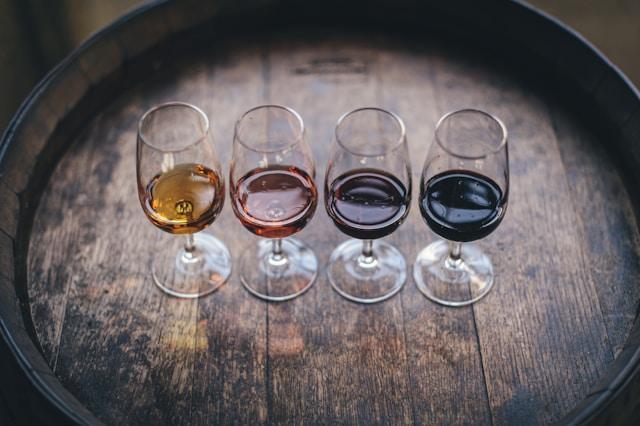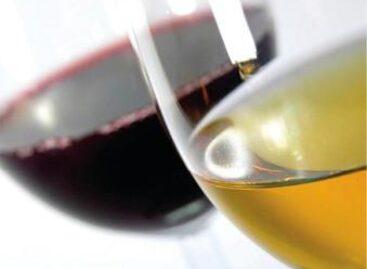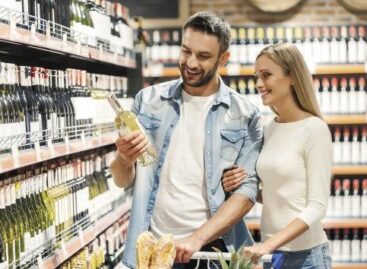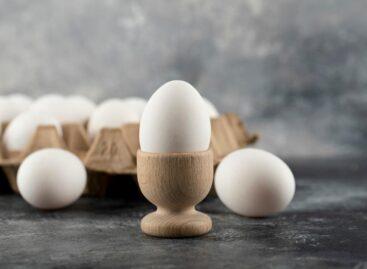There are serious problems in the Hungarian wine industry
The year 2024 was a difficult period for Hungarian viticulture and winemaking. The national wine grape growing area continued to shrink, and the yield was one of the lowest in a long time. According to the data of the National Council of Mountainous Communities (HNT), wine grapes were grown on 58,249 hectares in Hungary, which represents a decrease of 987 hectares in one year – writes VG.

The Kunság, Mátra and Tokaj wine regions suffered the greatest decline. The shrinkage of the growing area was particularly significant in the Bükk (3.4%), Mór (3%) and Mátra wine regions (2.98%). The Szekszárd wine region was the only one where a minimal increase of 6.2 hectares was registered.
The amount of grapes harvested in 2024 was 3.75 million tons, which is the lowest yield in the past ten years. Nowhere outside the Balatonboglár wine region did the average yield per hectare exceed 100 masz.
Which grape varieties dominate?
Although the demand for red wines is decreasing, Kékfrankos remains the variety grown in the largest area (6,983 hectares). At the same time, its plantations decreased by 156 hectares in 2024. The Bianca variety, which has the second largest production area, has seen an increase, with the production area increasing to 5,746 hectares. However, the production area of Cserszeg Fűszeres and Furmint has decreased significantly, with 120 and 70 hectares less grapes harvested from them.
In terms of yield, Bianca leads, with 558 thousand masz, accounting for 15% of the national production. Kékfrankos is in second place with 400 thousand masz, accounting for 41% of the production of red grapes.
Export record and changing consumption habits
According to data from the Hungarian Statistical Office, wineries’ exports increased by 17% in the first ten months of 2024 compared to the same period of the previous year. A total of 1.2 million hectoliters of Hungarian wine were exported, which is a record high in the past twenty years. The increase in value is also noteworthy: 18% more was paid for Hungarian wines, while the price per liter only increased minimally, by 0.8%.
Interestingly, sparkling wine exports increased by 57%, while bottled wine exports increased by 8%. However, in both categories, the unit price decreased: the price of sparkling wines fell from 2.31 euros to 2.25 euros, while the price of bottled wines decreased from 1.87 euros to 1.82 euros.
Related news
Layers of problems
🎧 Hallgasd a cikket: Lejátszás Szünet Folytatás Leállítás Nyelv: Auto…
Read more >Ipsos research: 37 percent of Hungarians would like to taste organic wine
🎧 Hallgasd a cikket: Lejátszás Szünet Folytatás Leállítás Nyelv: Auto…
Read more >Close to consumers
🎧 Hallgasd a cikket: Lejátszás Szünet Folytatás Leállítás Nyelv: Auto…
Read more >Related news
Egg prices up nearly one-third
🎧 Hallgasd a cikket: Lejátszás Szünet Folytatás Leállítás Nyelv: Auto…
Read more >Layers of problems
🎧 Hallgasd a cikket: Lejátszás Szünet Folytatás Leállítás Nyelv: Auto…
Read more >Too many gifts, too much food: our holiday excesses are putting a serious strain on the environment
🎧 Hallgasd a cikket: Lejátszás Szünet Folytatás Leállítás Nyelv: Auto…
Read more >





